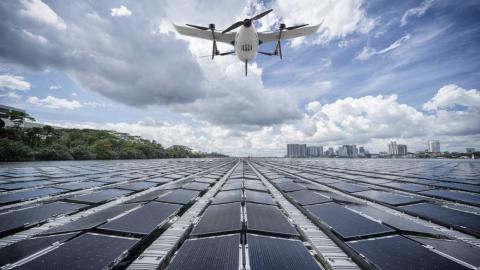An Israeli startup has created a hydrogen-powered drone model
Bentzion Levinson, who served as a combat commander in the Israel Defense Forces, was invited to join a hackathon to come up with innovative solutions to the fire kites. Levinson’s idea was to outfit drones with thermal cameras to identify the location of fires, and with firefighting equipment that could put out the fires from the air.
Since then, Levinson has been all-in on drones – so much so that he left the IDF and founded a startup, HevenDrones, to build solutions for the military, homeland security firefighters and aid organizations.
“Drones are becoming mainstream,” Levinson notes. “But if we want them to be able to take concrete actions – to install things, move something from point to point or put out fires – they need to be more like flying robots.”
Is hydrogen the answer?
The biggest questions for drones when used by the military or security services are how much it can carry and for how long it can remain in the air. Most drones run on electric batteries and can stay aloft no more than about 45 minutes when carrying just a few kilograms. The more they carry, the sooner they need to return to base to recharge. Hovering – which is necessary for surveillance or delivering a payload – uses even more juice.
HevenDrones’ answer: hydrogen.
“The core issue is energy density,” Levinson explains. “For a car, you can always make a bigger battery. That won’t work with drones. It will make them too large. Hydrogen has the best energy density.”
Brian Blum

